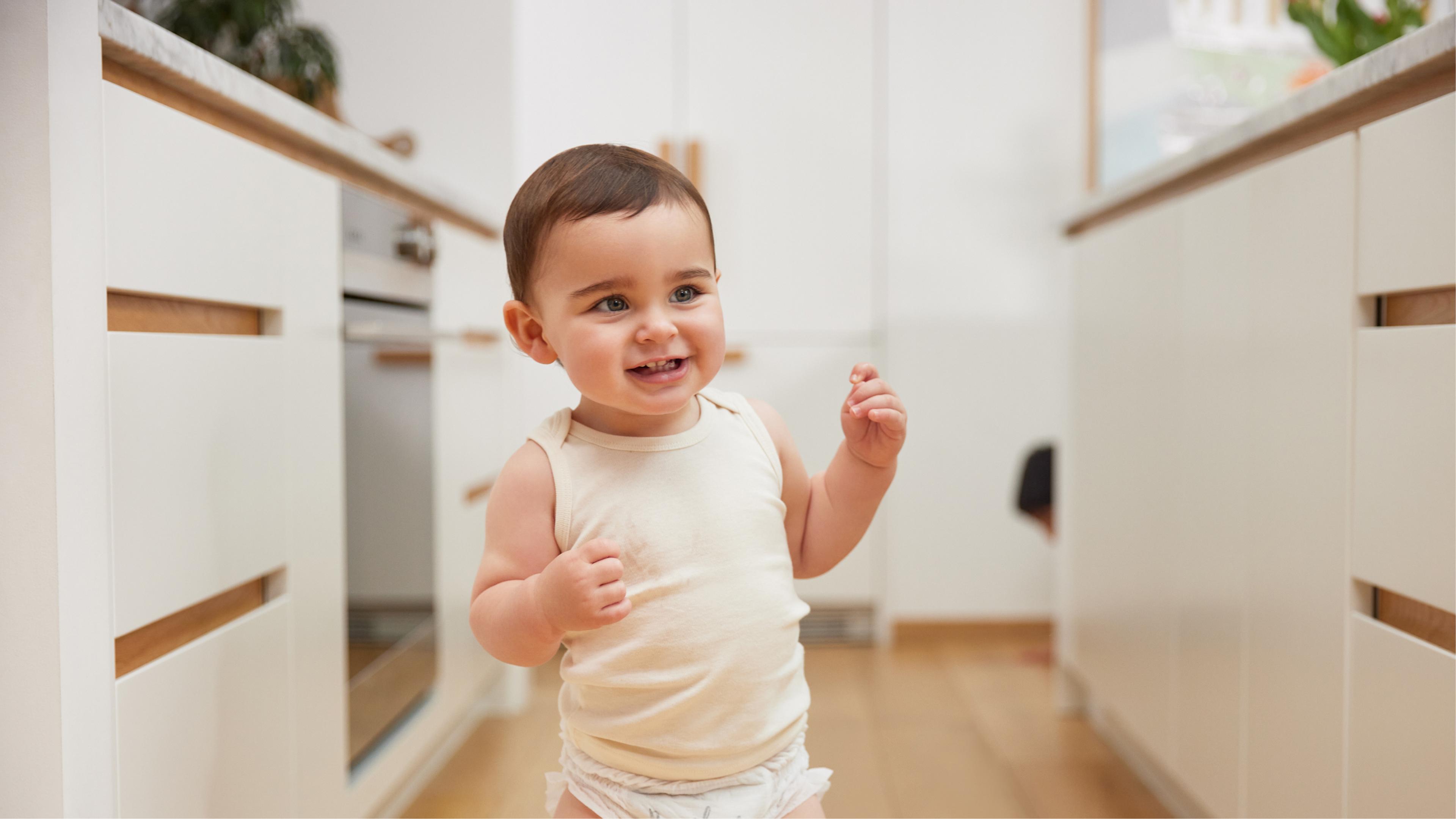Is it Time to Move On from the Potty?
Toilet training is simply the next step up from potty training – that is, using the actual toilet instead of a potty. Most children are ready to start the toilet training process between 2-3 years old, but every child is different and it’s best not to rush them to this next stage.
Let’s discuss the signs you can look out for, which indicate your little one may ready to start toilet training. We’ll also cover toilet training tips and how to handle mishaps.
Signs your child is ready to toilet train:
- Your child can feel when they are wet or dry, and will sometimes tell you.
- Your child is starting to do things on their own without your help.
- They feel like they want to wee and can hold on long enough to make it to the toilet.
How to Start Toilet Training Your Toddler
Even if your child shows signs of being ready, they may still be nervous about using the toilet and it will take some time to adjust. Encourage them by being positive, calm and patient.
8 Tips for toilet training your toddler:
- Calm their nerves about using the toilet by showing them how it works. You can start by emptying their potty into the toilet and letting them flush it so they become familiar with the motions and sounds.
- A step stool and toilet training seat are great additions to keep your little one safe and comfortable.
- Introduce training pants or underpants so they can undress themselves with simple ‘up and down’ movements of their pants (rather than a diaper).
- If possible, you may want to ditch the layers so your child has fewer items to remove when they need to go.
- Take your child to the toilet at regular times. Give them enough time to try to go, but don’t leave them there for too long.
- Praise your child for trying, even when they don’t succeed. Reward them with hugs, claps, stories or a star chart.
- Be prepared for times when they don’t make it to the toilet. Involve them in the cleaning process and talk through ways you can help prevent accidents next time.
- Teach them how to wash their hands after going to the toilet, and make the sink, soap and hand towel within their reach.
Common Potty Training Mishaps and how to Handle Them:
It’s one thing to master daytime toilet or potty training, but night time toilet training is another learning process.
It can take some time for toddlers to sense that their bladder is full or hold their urine overnight. In fact, most children’s systems don’t develop enough to stay dry all night until age 5, 6 or even 7. Bed wetting through to age 7 is considered normal and not a problem to worry about.
Once toilet trained, it’s normal for your toddler to be dry during the day but still need a diaper or training pants at night. Rascals CoComelon Training Pants make change-time easier, featuring an Easy Up & Down Design and up to 12 hours of Leak Protection, perfect for keeping your little one comfy and dry, all night long.
Wetting Their Pants Again after Successful Toilet Training
It’s completely normal for children to experience toilet training mishaps, even if they’ve been trained and developed good habits. Make sure your little one understands that it is okay for accidents to happen, otherwise they could get discouraged.
There are a number of reasons as to why they’ve taken a step back, such as:
- Adapting to a new environment, such as a new house or being on holiday
- Experiencing the birth of a sibling
- Transitioning from a crib to a bed
- Being weaned from breastfeeding
- Starting at daycare or preschool
- Not making it to the toilet several times and feeling discouraged
While this can be a bit frustrating, remember that they are also adapting to a new routine. The experience will be different for each child, and ultimately you want to build their confidence and independence. Here’s some tips to overcome these setbacks and get your potty training back on track:
Communicating with your toddler after they’ve had a potty training accident:
- Try to understand what caused their change in behavior
- Change your child in a calm manner, and encourage them to explain what went wrong
- Remind your child to go to the toilet – busy kids can often forget!
- Introduce fun incentives around the topic of going to the toilet, such as choosing the toilet paper or hand soap at the shops or a sticker chart
- Talk about the toilet in casual conversation, such as when you’re going to the toilet throughout the day
Remember, potty training takes time!
Every child will be different and the real secret behind successful toilet training is waiting until they’re ready. There’s no deadline, so try not get too caught up in the timing of it all.
Keep it fun, positive and enjoy watching them take another step in their growth and independence!
FAQs: Toddler Toilet Training
While every child is different, most children show readiness between 18 months to 3 years.
Signs include staying dry for longer periods, expressing interest in using the toilet, and following simple instructions.
Encouragement through positive reinforcement, using incentives, and making it a fun and rewarding experience can be helpful.
Patience is key. Avoid pressure, maintain a positive attitude, and consider taking a break and trying again later.

